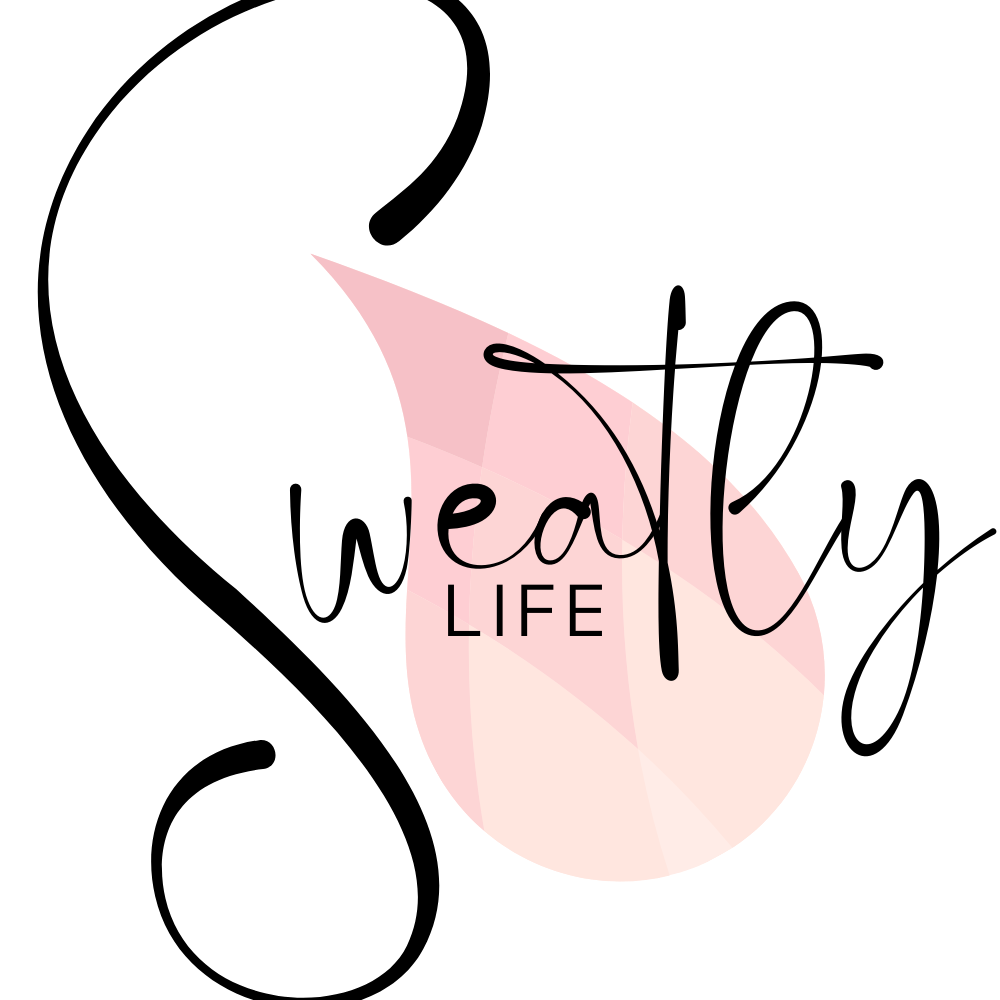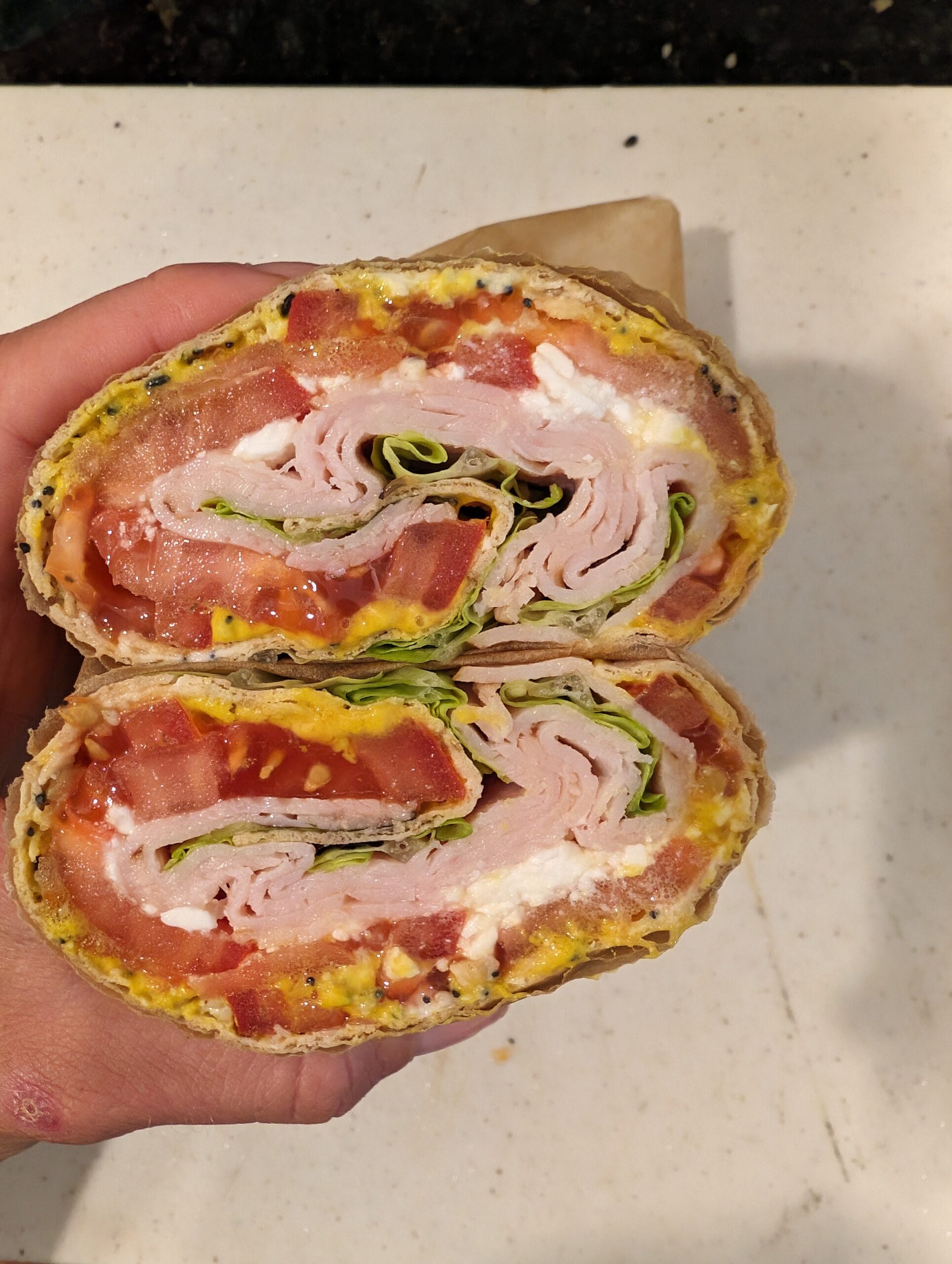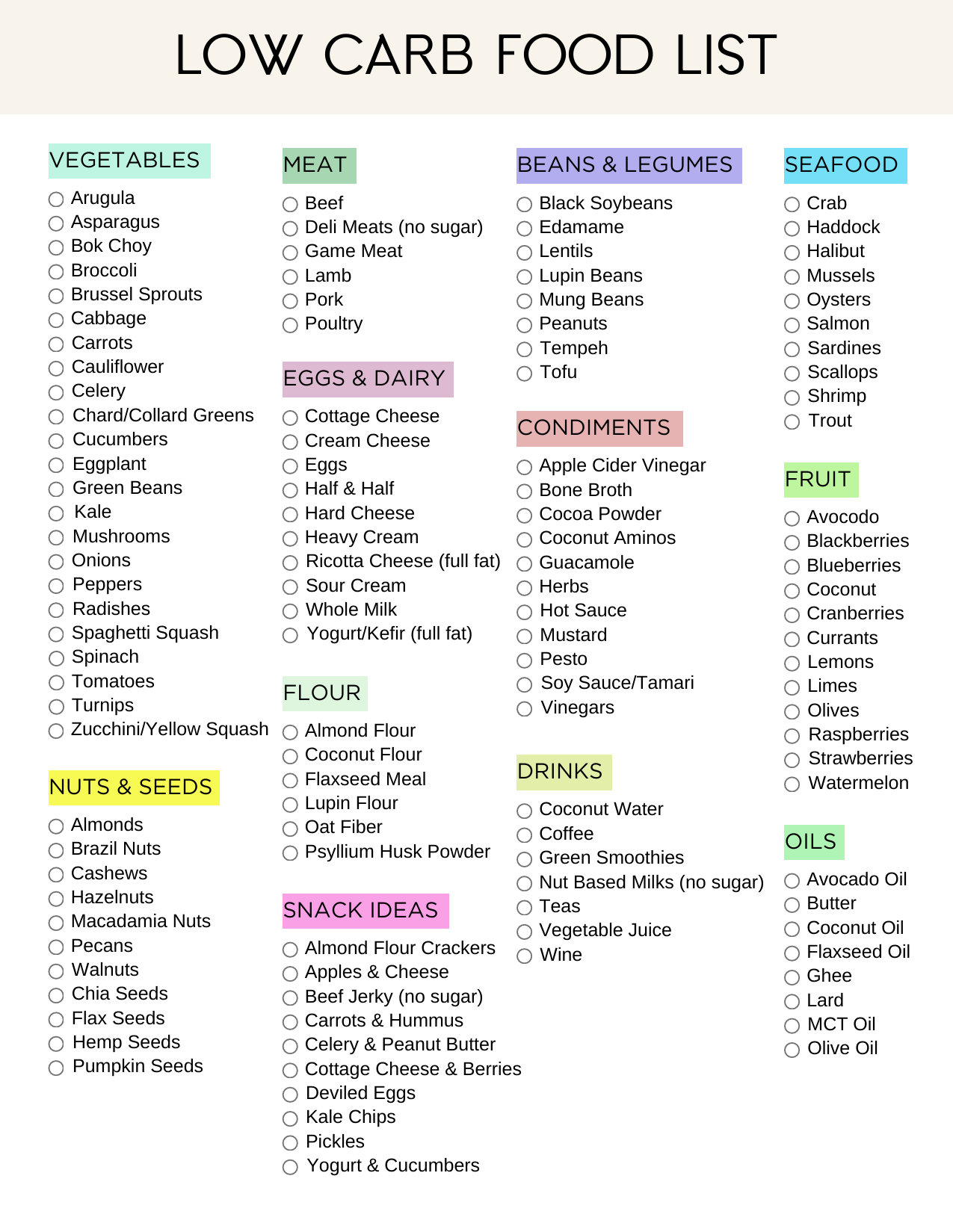
I actually love carbs. I have never been successful on a keto diet mainly because I am a runner and a fruit lover. Eating more fruits and vegetables has always gone really well for me, but I also don’t eat many unhealthy carbs like chips, crackers and bread. Because I focus on fruits and vegetables, which have a lot of fiber, my net carbs is still really low. I personally think everyone should do a low-carb diet of some kind to help lower blood sugar and get off the processed carbs and food. If I stick to fruits, veggies and high-protein, I tend to stay lean and toned. The minute I start adding processed carbs and sugar back into my life, my weight definitely goes up! I also get slower when I run, and I have less energy overall! Anytime I have a large meal with lots of carbs, I want to take a nap right after.
MEET BURN IT GIRL:
Hey, I made Burn It Girl basically for myself, because I wanted a natural version of the GLP-1 medications that women could take without needing a prescription, or injections. I knew there had to be a natural option, that may be a little less potent, but also no side effects. Burn it Girl uses a unique blend of potent ingredients like psyllium powder and acai berry extract, which have all been studied to increase GLP-1 levels. Inulin specifically is also shown to ” modulate lipid and glucose metabolism” and decrease food intake. GRAB IT NOW WHILE IT’S ON SALE FOR THE NEW YEAR!




Here’s your free low carb foods list pdf, updated for 2025!
Having an easy-to-read food list is a game-changer, trust me. If you’ve been navigating the keto diet, understanding net carbs, and looking for the best sources for healthy fats, this comprehensive low carb food list PDF is exactly what you need. It became my go-to guide for grocery shopping, helping me make informed choices without the guesswork. Whether it’s zero carb options, the right kind of dairy products, or even learning about the health benefits of wild-caught fish, this list has it all. Don’t miss out on creating delicious meals that align with your keto goals. Make sure to download your low carb foods list PDF today (below!). It’s a great addition to your meal planning toolkit, guiding you meal by meal towards your calorie goal. Let it take the hassle out of keto grocery shopping for you.
Also grab my high-protein recipe pack to help you know exactly what to eat to stay low-carb!
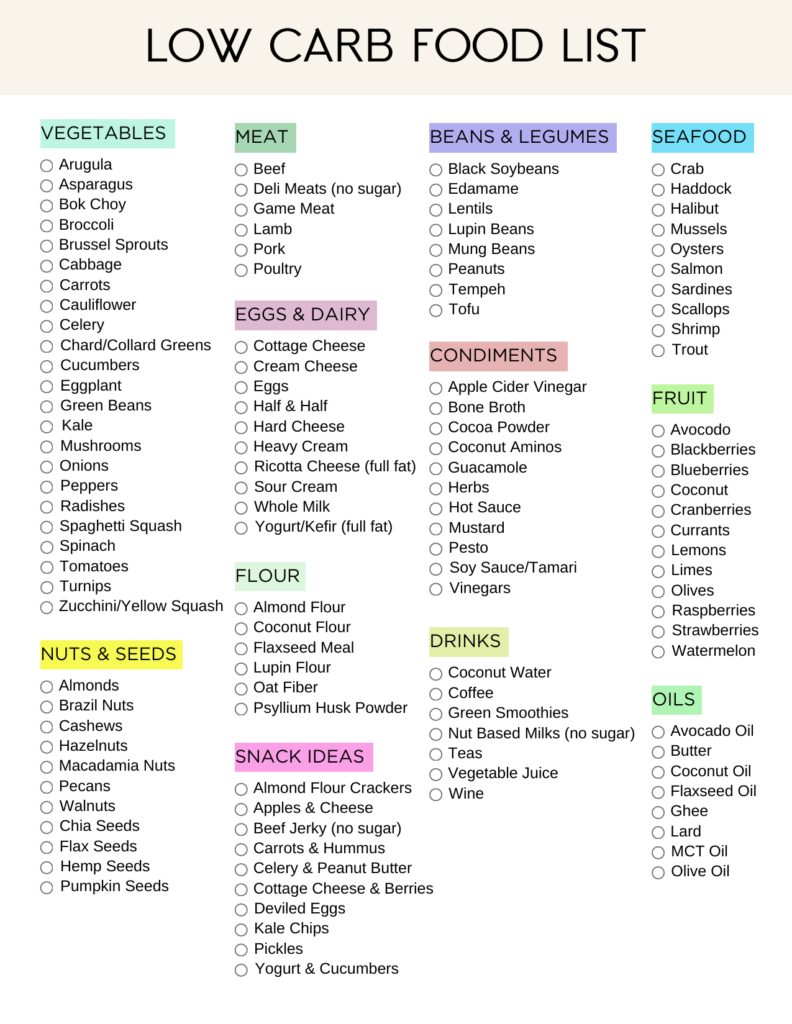

What is a Low Carb Diet?
A low-carb diet is a dietary approach that restricts carbohydrate intake, typically to promote weight loss or manage certain medical conditions. Here’s a comprehensive look at what constitutes a low-carb diet:
Definition and Basics
- Carbohydrate Reduction: A low-carb diet limits the consumption of carbohydrates, which are found in sugary foods, pasta, and bread. Instead, it emphasizes foods high in protein and fat.
- Daily Carb Limit: The amount of carbs allowed can vary, but generally, it involves consuming between 20 to 100 grams of carbs per day. Specific plans may set different limits based on individual goals and health conditions.
Key Components
- Allowed Foods:
- Proteins: Meat, fish, eggs, and other protein sources.
- Fats: Nuts, seeds, oils, butter, and avocados.
- Vegetables: Non-starchy vegetables such as leafy greens, broccoli, cauliflower, and peppers.
- Restricted Foods:
- Sugary Foods: Sweets, soda, and desserts.
- Grains and Starches: Bread, pasta, rice, and certain starchy vegetables like potatoes.
- Processed Foods: Many processed snacks and meals contain high levels of carbs.
Types of Low-Carb Diets
- Ketogenic Diet (Keto): Extremely low in carbs (typically under 20-50 grams per day), moderate in protein, and high in fats. The goal is to enter a state of ketosis, where the body burns fat for fuel instead of carbs.
- Atkins Diet: Begins with a very low carb intake (20 grams per day) and gradually increases the amount of carbs as weight loss goals are approached.
- Paleo Diet: Focuses on whole foods and typically includes fewer carbs by excluding grains and processed foods.
- South Beach Diet: Starts with a restrictive phase, then reintroduces some carbs in a controlled manner.
Benefits
- Weight Loss: Many people lose weight on a low-carb diet due to reduced appetite and increased fat burning.
- Blood Sugar Control: Helps manage blood sugar levels, which can be beneficial for individuals with diabetes or insulin resistance.
- Heart Health: May improve heart disease risk factors, such as blood pressure, cholesterol levels, and triglycerides.
Potential Risks
- Nutrient Deficiency: Restricting carbs may lead to a lack of certain nutrients found in carb-rich foods.
- Initial Side Effects: Commonly known as the “keto flu,” these can include headaches, fatigue, and irritability as the body adjusts to lower carb intake.
- Long-Term Sustainability: Some find it difficult to maintain a low-carb diet long-term due to its restrictive nature.
What Are Net Carbs?
I remember the moment I stumbled upon the idea of net carbs and how it entirely shifted my perspective on the keto journey. It felt like finding a treasure map that led straight to the ultimate low carb foods list. Let me share with you why understanding net carbs is crucial if you’re navigating the ketogenic diet. Net carbs, simply put, are the carbohydrates in food that your body can actually digest and use for energy- think of them as the chief navigators guiding your blood sugar levels and ketosis journey.
To calculate net carbs, you start by looking at the nutrition facts label on your food packaging. The formula is quite straightforward: Total Carbohydrates minus the Fiber. Why subtract fiber? Because fiber is a carb that your body doesn’t digest; it simply passes through you. If you’re incorporating keto-friendly foods into your meal plan – like those rich in healthy fats, low carb vegetables, and high protein sources – paying attention to net carbs ensures you stay on track without getting lost in a sea of hidden sugars.
It’s like setting a calorie goal but for carbs, ensuring each meal brings you closer to weight loss and better health benefits, without the worry of getting kicked out of ketosis. Trust me, keeping an eye on the net carb amount is a game-changer in your keto diet journey.
Essential Foods for a Keto Diet
Embarking on my keto journey, I discovered that low carb vegetables, healthy fats, high protein sources, and dairy products are the pillars of a successful ketogenic diet. For someone like me, who’s always on the lookout for good fats and aiming to maintain my calorie goal, the clarity these categories offer is invaluable. I stock my pantry with olive oil and coconut oil, ensuring I’m getting those essential fatty acids. My keto grocery list isn’t complete without leafy greens; they’re my go-to low carb vegetables. And when it comes to proteins, wild-caught fish always find a spot in my shopping cart. Lastly, full-fat dairy is a must for me; it’s about getting the right nutrition while managing my net carb amount.
Healthy Fats and Oils
Embarking on a keto journey, I quickly discovered the pivotal role of healthy fats. These aren’t just any fats; we’re talking about the cream of the crop like coconut oil, olive oil, and avocado oil. Each one plays a starring role in whipping up delicious meals while keeping you squarely in ketosis. It was a revelation to me that not all oils are created equal. Steering clear of vegetable oils such as cottonseed and soybean oil became a mantra for maintaining my health and diet quality. These oils, I learned, can derail your progress by sneaking in unwanted processed fats. Knowing which fats to embrace and which to avoid has been a game-changer in my keto adventure.
Protein Sources: Meat and Plant-based
Embarking on a low carb diet, I quickly learned the importance of getting enough protein to keep me satiated and my muscles fueled. With a keen eye on my net carb amount, I incorporated a mix of high-protein sources into my meal plan.
- Meat and poultry became staples, offering pure fats and a high protein punch with virtually zero carbs.
- Wild-caught fish not only provided essential fatty acids but also added variety to my diet.
- For plant-based days, I leaned into options like almond flour and coconut cream to keep things interesting without spiking my blood sugar levels.
Portion sizes were always on my radar, ensuring I stayed within my calorie goal while enjoying delicious meals.
Dairy, Nuts, and Seeds
Embarking on the keto journey, I’ve discovered the pivotal role of full-fat dairy products, nuts, and seeds in maintaining a balanced low carb diet. These pantry staples are not just great additions to any meal plan; they’re essential. Opting for full-fat options ensures you’re getting healthy fats and fewer calories, crucial for staying in ketosis. But here’s a note of caution: the net carb amount in nuts and dairy can sneak up on you. Always check the nutrition facts label and keep an eye on those typical serving sizes. They’re key to enjoying these delicious meals without compromising your calorie goal or carb count.
Low Carb Vegetables and Fruits
I’ve noticed on my keto journey, which is peppered with trial and error, how crucial incorporating the right low carb vegetables and fruits is. Embracing a variety of leafy greens was a game-changer for me, aiding not just in keeping those pesky net carbs low but also in enhancing my meals with fibers and essential nutrients without jeopardizing my ketosis state. Berries, with their antioxidant properties and naturally low net carb amount, became my go-to for a sweet treat. However, not all fruits and veggies made the cut. I learned to navigate my grocery shopping adventures with a keen eye, sidestepping high-carb trap foods like sweet potatoes and most tropical fruits. These, despite their health benefits, pack a high carb count, making them less ideal for someone on a strict keto diet. This discernment has been pivotal in maintaining not just my carb count, but ensuring each meal brings me closer to my weight loss and health goals. Trust me, mastering your vegetable and fruit intake on keto will bring a delicious diversity to your diet without the carb overload.
Beverages and Sweeteners
Staying hydrated is my mantra, especially when I dove headfirst into my keto journey! But, let’s be real, water can get a tad boring. That’s why I started exploring other keto-friendly beverages that kept me on track without feeling deprived. So, here’s a quick hit list for you:
- Coconut milk and almond milk are creamy, delicious, and perfect for your morning coffee or a stand-alone treat.
- Tea and black coffee are my go-to for a caffeine hit without the carbs.
- Bone broth not only keeps you hydrated but also replenishes electrolytes.
Steering clear of high-carb temptations? I gotchu. Opt for natural low-carb sweeteners like stevia or erythritol; they’re the secret to indulging those sweet cravings without the guilt or blood sugar spikes. Trust me, keeping it simple, natural, and keto-compliant can transform your daily beverage game!
Counting Macros for Low-Carb and High-Protein Dieting Success:
Counting macros, short for macronutrients, involves tracking the intake of carbohydrates, proteins, and fats in your diet. This method can be particularly effective for managing a low-carb diet. Here’s how counting macros can help you maintain a low-carb eating plan:
1. Precise Carbohydrate Management
- Carb Limits: By counting macros, you can ensure you stay within your specific carbohydrate limit, which is crucial for a low-carb diet. This helps prevent accidental overconsumption of carbs.
- Identifying Hidden Carbs: It helps identify hidden carbs in foods that might not be obvious, such as sauces, dressings, and processed foods, ensuring you adhere to your carb limit.
2. Balanced Nutrition
- Adequate Protein and Fat Intake: Counting macros ensures you’re getting enough protein and fats to compensate for the reduced carbs, which is important for satiety and muscle maintenance.
- Avoiding Nutrient Deficiencies: By tracking your intake, you can avoid nutrient deficiencies and ensure you’re getting a well-rounded diet.
3. Customizing Diet to Individual Needs
- Personalization: Counting macros allows you to tailor your diet to your specific needs, whether it’s for weight loss, muscle gain, or overall health.
- Flexibility: You can adjust your macro ratios based on your goals. For example, a common low-carb macro ratio might be 10-20% carbs, 30-40% protein, and 40-60% fats.
4. Improved Awareness and Control
- Mindful Eating: Tracking macros increases awareness of what you’re eating, which can lead to more mindful food choices and better adherence to a low-carb diet.
- Portion Control: It helps with portion control by making you more conscious of serving sizes and the macro content of different foods.
5. Enhanced Weight Management
- Caloric Awareness: While focusing on macros, you also become more aware of your overall caloric intake, which is important for weight management.
- Satiety and Energy: Ensuring adequate protein and fat intake can help maintain satiety and energy levels, making it easier to stick to a low-carb diet without feeling deprived.
Practical Steps to Count Macros for a Low-Carb Diet
- Determine Your Macro Ratios:
- Decide on your target macro ratios. For a low-carb diet, this typically means reducing carbs and increasing protein and fat.
- A common starting point might be 10-20% carbs, 30-40% protein, and 40-60% fats.
- Calculate Your Daily Needs:
- Calculate your daily calorie needs based on your activity level, weight, height, age, and goals. Use this to determine the grams of each macro you need per day.
- For example, if you aim for 20% carbs on a 2000-calorie diet, that’s 400 calories from carbs (or about 100 grams, since carbs have 4 calories per gram).
- Track Your Intake:
- Use a food diary or an app to log your food intake and monitor your macros.
- Many apps provide databases with macro information for various foods, making it easier to track accurately.
- Plan Meals:
- Plan meals and snacks that fit within your macro targets. Focus on low-carb foods like non-starchy vegetables, lean proteins, and healthy fats.
- Adjust portions and food choices as needed to stay within your macro limits.
Counting macros makes sure that your calorie deficit provides the right amount of nutrients. If you eat 1200 calories of your favorite cupcakes every day, you might lose a little weight, but eating just 4-5 cupcakes the whole day will leave you feeling terrible and hungry. If you eat 1200 calories of fruits, vegetables and lean protein, you will feel like you are eating a lot, and all the fiber and protein will make you feel super full!
When you add in my Peloton workout routine on top of eating the right amount of calories and macros for your body, you will literally see fat fall off your body fast. It is crazy how quickly your body responds when you give it the right fuel and the right amount of nutrients!
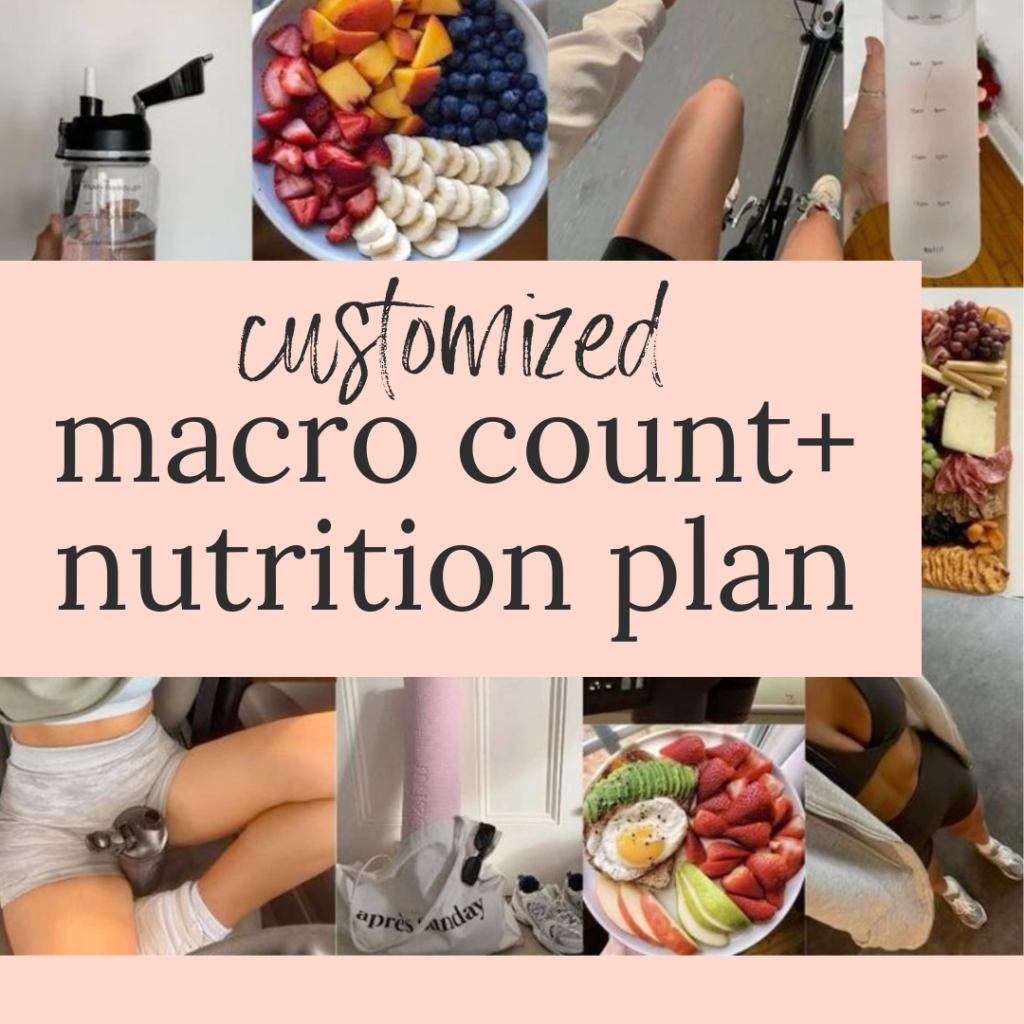
-
Sale!

4-Week Peloton Pilates Workout Plan
$12.99Original price was: $12.99.$8.99Current price is: $8.99. -
Sale!
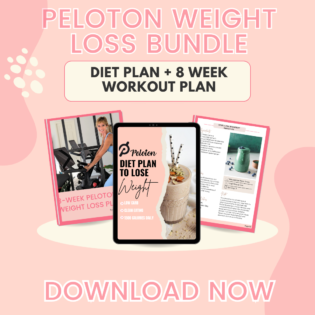
Peloton Diet Plan To Lose Weight + 8 Week Peloton Workout Plan Cardio + Strength
$27.99Original price was: $27.99.$22.99Current price is: $22.99. -
Sale!
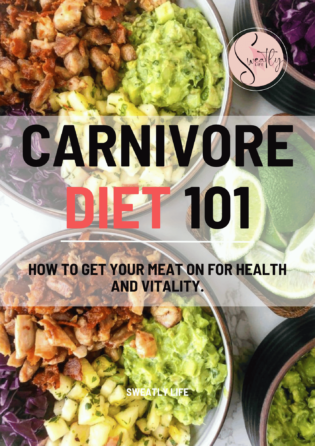
Canivore Diet Plan 101: Get Started
$7.99Original price was: $7.99.$4.99Current price is: $4.99. -

